
The 25 Most Influential Horror Novels of All Time
Now more than ever, people are hungry for horror fiction. The 2010s and the 2020s have seen a rise in what is often referred to as “elevated horror” and/or “social horror” in film and novels. And while Stephen King has dominated horror for the past several decades, it seems as if we’re in the middle of a horror renaissance. Of course, King is going to remain at the top of the horror charts, but we’re also witnessing a new batch of horror authors rising to popularity. We’re hungry for horror, and it feels like the genre keeps getting better and better as it’s given more room to grow.
But while innovative horror might feel new, it totally isn’t. Horror as a genre has been growing, changing, and influencing our culture for centuries. From early Victorian literature to new contemporary classics, here are the 25 most influential horror books of all time. These books make the list for the way they’ve redefined what horror means, opened up the doors to explore new possibilities, and influenced other authors to do the same. If you love horror, make sure you check out each and every one of the books on this list.
Haunted Houses and Ghosts

The Castle of Otranto by Horace Walpole
Horace Walpole’s The Castle of Otranto gets a shout-out for being one of the first. It is the novel that launched the gothic fiction genre. Eerie supernatural elements mixed with realistic fiction? Yeah, that came from Walpole. You can also thank him for the dark and scary corridors, the creaking floorboards, the doors closing by themselves, and many other tropes that are now highly recognized staples of the horror genre. Beloved classics like Dracula and “The Telltale Heart” would be nothing without The Castle of Otranto.
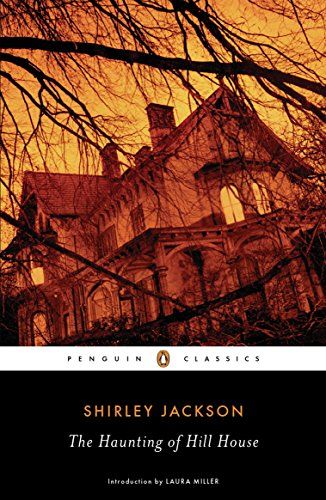
The Haunting of Hill House by Shirley Jackson
While many of Shirley Jackson’s works have been influential on the horror genre, it’s hard to top The Haunting of Hill House for the hold it has on horror fans. This is a character-driven horror novel that has become a model for haunted house stories. Pretty much every time a new haunted house novel comes out, you should expect it to be compared to Jackson’s iconic novel. Then there’s Mike Flanagan’s series loosely based on the novel. While the Netflix series made some pretty big changes to the source material, it’s also pretty clear that the show has nothing but reverence for not only the book but Shirley Jackson’s work as a whole. And the Haunting of Hill House series has gone on to leave a pretty big mark on what horror is capable of doing on television.

The Shining by Stephen King
It’s impossible to talk about haunted house novels without recognizing Stephen King’s The Shining and everything this novel contributed to the genre. Stephen King was heavily influenced by The Haunting of Hill House, but The Shining blew up the haunted house and made it a large and ominous haunted hotel. And as if ghosts weren’t enough, The Shining also incorporates a kid with supernatural abilities and a snow storm to close the protagonists off from the rest of the world. And while King was not the biggest fan of Stanley Kubrick’s film adaptation, Kubrick’s version of The Shining undeniably changed the shape of horror films forever.

House of Leaves by Mark Z. Danielewski
Mark Z. Danielewski’s 2000 novel House of Leaves turned the haunted house genre on its head. The ergodic novel incorporates strange fonts, footnotes, and odd layouts that often mirror the events of the story. In this way, the text feels alive and interactive, which heightens the scare factor for readers. While many have praised Danielewski’s accomplishment with House of Leaves, not many authors have attempted to mimic this format. And yet House of Leaves remains one of the most popular contemporary haunted house novels, and an important point of reference for others writing in this genre.

The Turn of the Screw by Henry James
The Turn of the Screw is an interesting horror novella because it’s one that can be read many different ways. Are the supernatural moments real? Are they a figment of the governess’s imagination? However you read it, James’s novella is an excellent example of early psychological horror. Yes, this is a haunted house story, but it also incorporates elements of feminist and Marxist thinking, along with the psychological exploration. Oh, this is another novel that was loosely adapted into a Netflix series by Mike Flanagan. This guy knows his influential horror.
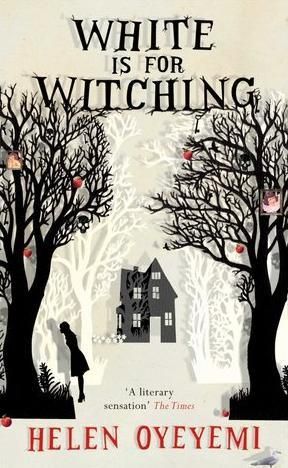
White is for Witching by Helen Oyeyemi
White is for Witching is a haunted house tale that subverts a lot of the expectations of the genre, specifically crossing racial lines and redefining how we look at “white” and “black” as symbols in horror fiction. As the title suggests, in Oyeyemi’s tale, white becomes the color of evil, of witchcraft, and of fear, rather than black. Gothic motifs that were established in earlier texts are reexamined and reimagined here. Readers are forced to confront imagery that might have once seemed familiar to them with new eyes. While White is for Witching is a newer text, it’s significant for what it has contributed to the gothic horror genre.

Beloved by Toni Morrison
What if it’s not a house that’s haunted but rather a person that’s haunted? That’s one of the horror tropes Toni Morrison plays with in her critically acclaimed novel Beloved. Yes, this novel is unsettling, but Morrison’s Beloved does so much more than simply play with horror tropes to scare readers. This novel uses horror as a framework to examine the psychological effects of slavery and the pain of grief. In 2019, The BBC listed Beloved as one of the 100 most inspiring novels of all time.
Vampires

Carmilla by Joseph Sheridan Le Fanu
Moving from ghosts to vampires, Carmilla is one of the most important vampire texts ever written. This gothic novella predates Dracula and is one of the first vampire stories ever written. In fact, Bram Stoker’s Dracula was heavily influenced by this novella. Carmilla was revolutionary for the way it used vampires to explore sexuality — specifically female sexuality and lesbianism. While Carmilla is less widely read than its vampiric successors, vampire fiction as we know it today would not be the same without this book.

Dracula by Bram Stoker
The name “Dracula” has become synonymous with “vampire” and so, for obvious reasons, Bram Stoker’s Dracula is on this list. In her 1995 article “Sympathy for the Vampire,” Dr. Wendy Doniger wrote that Dracula has become the “centrepiece” for vampire literature, “rendering all other vampires BS or AS.” So much of what we think of now as classic vampire lore stemmed from the story of Dracula: transforming into bats, hatred of garlic, fear of crosses, and much more.

Interview with the Vampire by Anne Rice
If Dracula created the template for vampire lore, then Anne Rice’s Interview with the Vampire created the mold for the contemporary vampire. Anne Rice made vampires sympathetic, and more importantly, she made them sexy. Interview with the Vampire paved the way for book series and shows like True Blood, The Vampire Diaries, and, yes, even Twilight. Anne Rice’s vampires are not simply monsters. They are grappling with the morality of being a vampire. They still have the ability to feel human emotions and even fall in love. And many people have fallen in love with Rice’s vampires. This novel launched a series that has sold millions of copies worldwide and remains a favorite among vampire fans to this day.

Fledgling by Octavia Butler
Octavia Butler is traditionally known for her science fiction works, and during her lifetime the author won multiple Hugo and Nebula Awards. But in her 2005 novel Fledgling, the bestselling author explored vampires from a sci-fi perspective. While Butler’s creatures are called “Ina,” they otherwise have much in common with what readers traditionally understand to be vampires. They don’t age. They drink blood. But these vampires are biologically created rather than supernaturally made, and they cannot turn others into vampires. They also co-exist with humans in a symbiotic relationship. The Ina’s existence is explained through science rather than the supernatural here, and through this conceit Butler explores racism and the fear of racial contamination.

The Gilda Stories by Jewelle Gomez
The Gilda Stories is the debut novel from author and activist Jewelle Gomez. This novel is a feminist take on the vampire genre that follows a Black bisexual vampire living through many lives and many decades. Gomez’s take on the vampire expands on earlier feminists works like Carmilla to examine not only gender and sexuality but also what it means to move through the world as a Black woman. The novel was the recipient of two Lambda Literary Awards and was later adapted into a stage play Bones & Ash: A Gilda Story.
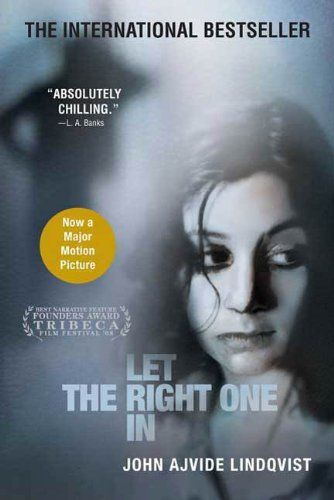
Let the Right One In by John Ajvide Lindqvist
Let the Right One In is a Swedish horror novel that has inspired many adaptations. There’s the 2008 Swedish film adaptation, the 2010 American adaptation Let Me In, the prequel comic book series, and an upcoming television adaptation from Showtime. The novel is a unique entry into the vampire canon for a few reasons. For one, the vampire at the center of the story, Eli, is a child and androgynous. The novel also deals with difficult subjects such as pedophilia, genital mutilation, self-harm, bullying, and alcoholism. Let the Right One In is a brutal story that doesn’t shy away from supernatural violence, but the novel also reflection on the horrors of real life. And yet, the heart of the story is the friendship between Eli and a 12-year-old boy named Oskar.

I Am Legend by Richard Matheson
Richard Matheson’s I Am Legend is considered the first modern vampire novel. The novel imagines a post-apocalyptic world that has been overcome with a disease that turns people into vampire-like creatures. Not only did this novel offer a new take on vampire fiction, but it also popularized the post-apocalyptic novel and the frightening concept of a world overcome with disease. The novel was later adapted into a film starring Will Smith. While the movie imagines a zombie apocalypse rather than one lead by vampires, the messaging of the story remains in tact: what makes us human? And what makes a monster?
The Occult and the Devil

Rosemary’s Baby by Ira Levin
Rosemary’s Baby in a 1967 horror novel by Ira Levin. The novel became the top bestselling horror novel of the 1960s and inspired a horror boom. The novel was wildly popular for the way it built tension and dread. The story is a slow burn with the true horror only really culminating in the final shocking pages. But Levin keeps readers hooked with real suspense and by drawing us into the paranoia of protagonist Rosemary. If you’ve seen other horror fiction that confronts the fear and horror of pregnancy and new motherhood, they have Rosemary’s Baby to thank for paving the way. And pretty much every slow burn suspense novel that has followed has taken a page from this masterfully constructed suspense story.

The Exorcist by William Peter Blatty
Love a good exorcism story? Then you have to go back to the original, William Peter Blatty’s The Exorcist. The novel was inspired by a real 1949 case of demonic possession and exorcism that Blatty heard about while he was a student at Georgetown University. Blatty’s novel became the blueprint for exorcist fiction, and Blatty’s film adaptation of The Exorcist went on to become one of the most influential horror films of all time.

The Ballad of Black Tom by Victor LaValle
Sure, H.P. Lovecraft was incredibly influential to the horror genre, but he was also racist, so I would recommend you skip the original in this case. Instead, pick up Victor LaValle’s revisiting of Lovecraft’s “The Horror at Red Hook” from the perspective of a Black man. The Ballad of Black Tom has won multiple awards, including the 2016 Shirley Jackson Award and the 2017 Hugo Award for Best Novella. Critics have commended the novella for working as both a literary rebuttal to the racist works of Lovecraft while also standing on its own as a remarkable work of horror fiction.
Zombies and Other Monsters

The Girl with All the Gifts by M.R. Carey
Have you ever sympathized with a zombie before? You might just after reading M.R. Carey’s The Girl with All the Gifts, another novel that has readers questioning what makes someone human and who the real monsters are. The sci-fi horror crossover imagines zombies as a fungal infection that has wiped out most of humanities. And while most horror imagines zombies as brainless creatures, Carey expands on zombie mythology. What if some zombies could think critically and fell emotions? Torie Bosch of Slate wrote that the novel “turns eating brains from the usual empty-calorie snack into a full, complex, palate-challenging meal.”

The Strange Case of Dr. Jekyll and Mr. Hyde by Robert Louis Stevenson
While Dr. Jekyll and Mr. Hyde isn’t technically a werewolf story, Robert Louis Stevenson’s classic Victorian gothic novella might just be one of the earliest werewolf stories out there. After all, when Jekyll transforms into Hyde, he becomes a wild monster of a man who cannot control his actions. The novel, like many werewolf stories, explores the duality of human nature, the public side we present to the world and our desires and deepest truths that we hide from the world. This story remains widely read and widely recognized to this day. After all, losing all control over your secret self? What could be more horrifying than that?

Frankenstein by Mary Shelley
In 1818, Mary Shelley anonymously published the novel Frankenstein, and the world would never be the same. The author was only 20 years old when the book was published. While the story contains many Gothic horror elements, it’s also monumental for being one of the first science fiction stories. What makes this story so timeless? Patricia MacCormack, Professor of Continental Philosophy at Anglia Ruskin University, says, “Shelley’s dealing with the same themes the Greeks were dealing with…It’s the idea of asking your maker what your purpose is. Why are we here, what can we do?”
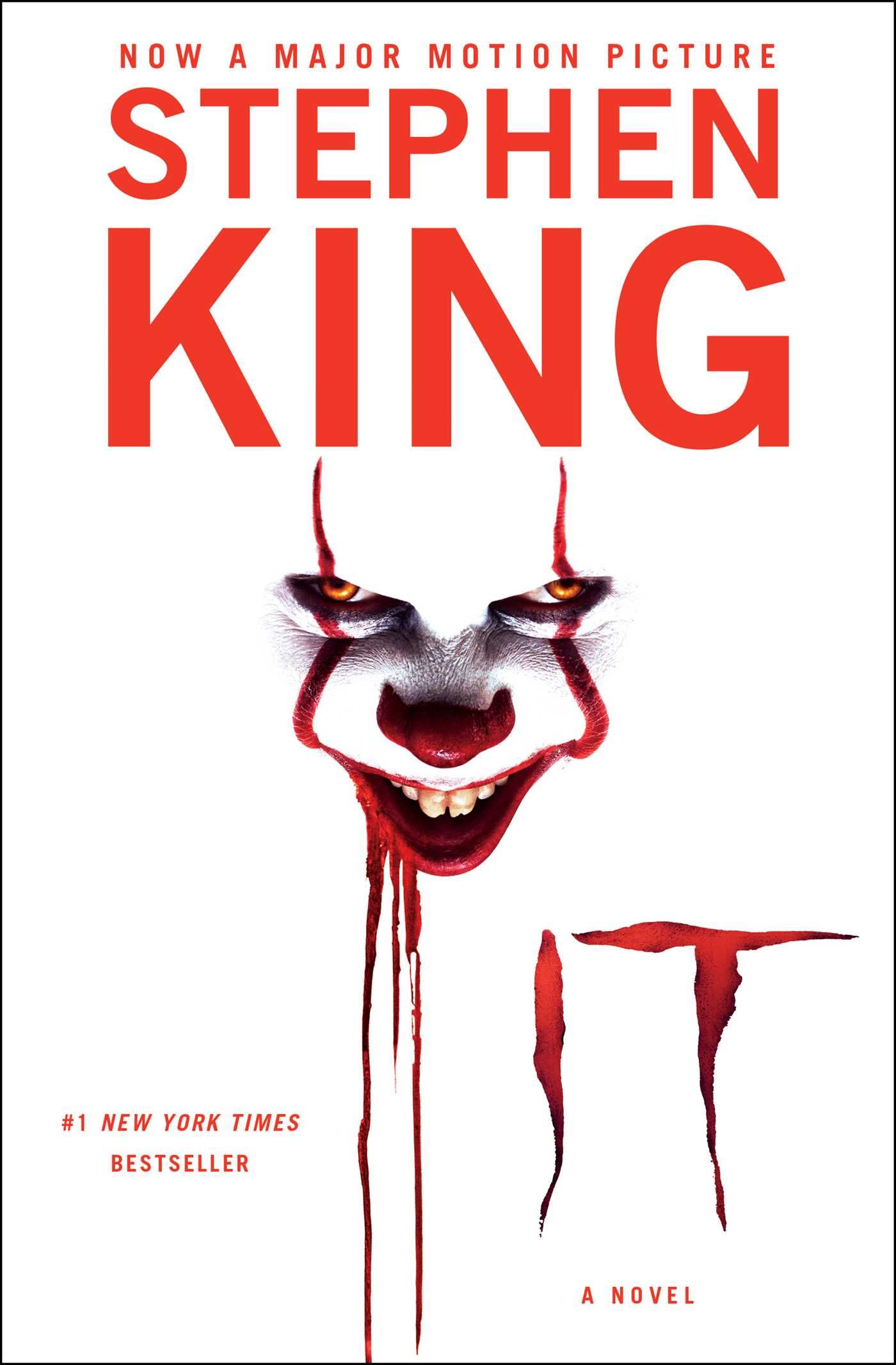
It by Stephen King
It should come as no surprise that the “King of Horror” would show up again on this list. It is one of Stephen King’s most popular novels, in no small part because of the story’s antagonist, Pennywise, who most often appears to its victims as a clown. King says he got the idea for Pennywise when he was trying to think of what scared kids the most, and he also thought of the character as a troll stalking the sewers, reminiscent of the classic “Billy Goats Gruff” story. While clowns might have been scary before, after King’s IT hit the scene, clowns would never been seen the same again.
Japanese Horror
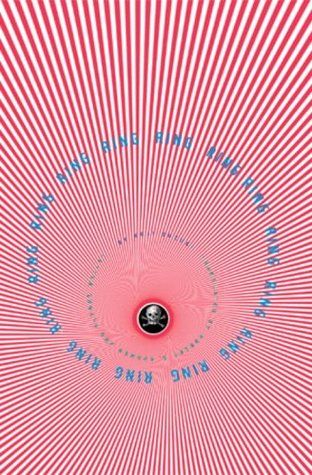
Ring by Kōji Suzuki
Ghost stories have long been a tradition of Japanese storytelling, at least since the Heian period, from 794 to 1185. And now, contemporary Japanese horror novels and movies are extremely popular around the world. And western authors and filmmakers — especially American filmmakers — are constantly borrowing from Japanese horror. One of the most influential Japanese horror novels? Kōji Suzuki’s Ring, which would later inspire a popular film franchise in both Japan and the United States. The novel has also inspired multiple manga adaptations.
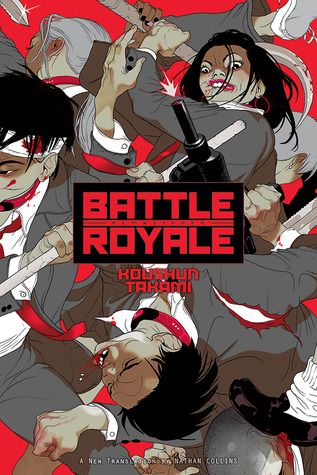
Battle Royale by Koushun Takami
Koushun Takami’s 1999 novel Battle Royale is one of the most influential and most controversial Japanese horror novels of all time. Quentin Tarantino named Battle Royale as a major inspiration for his film Kill Bill. Although Suzanne Collins has denied getting the idea for The Hunger Games from Battle Royale, fans have been quick to point out that the two stories are strikingly similar. Most recently, Battle Royale became the influence for the wildly popular television series Squid Game. Creator Hwang Dong-hyuk noted specifically that the Battle Royale manga has a huge influence on the Squid Game series.
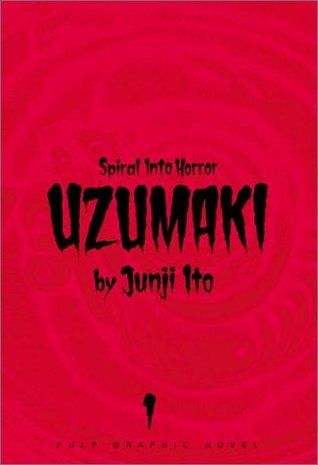
Uzumaki by Junji Ito
No conversation about Japanese horror would be complete without mention of Junji Ito, the mastermind behind many strikingly horrifying comics and graphic novels. Ito’s Uzumaki is worth noting for its popularity, its critical acclaim, and its lasting influence on the horror genre. Uzumaki has also been translated in multiple languages and adapted into a live action horror film. The story is an unsettling one about a town obsessed with spirals, but what really sticks with readers is Ito’s haunting images, which Ito says are inspired in part by visual artists like H.R. Giger and Salvador Dali.
And One Movie

Get Out by Jordan Peele
While Get Out is not a novel, we simply cannot ignore the hold Jordan Peele’s film has had on the horror community since its release in 2017. The film has inspired a social horror renaissance over the past several years. And for horror literature specifically, readers are scrambling to find more social horror that’s perfect for fans of Get Out. Through this film, Jordan Peele found a way to deconstruct the horrors of racism in a way that white people could understand and Black people could identify with. In a country that had just elected Donald Trump as president, this type of story was needed more than ever. And horror fans are hungry for more stories like this that resonate with the social, political, and emotional terror of our contemporary world.
Looking to learn more about horror? Here are some facts about horror fiction that might surprise you. And if you’re just wanting more good horror recommendations, here are some exciting 2022 horror books we scare you to read. Be safe out there, horror fans!








